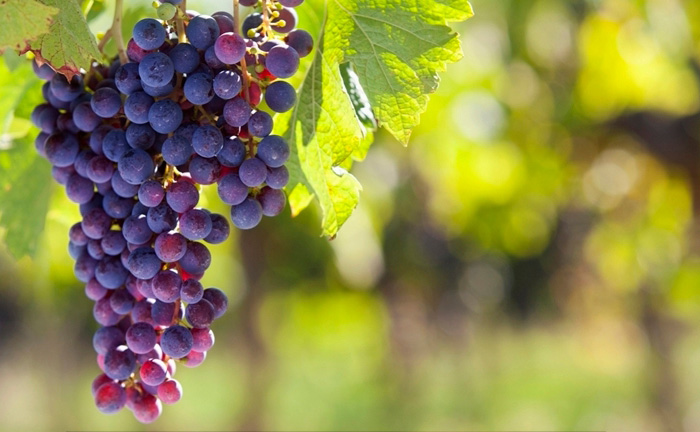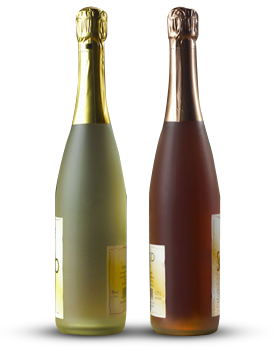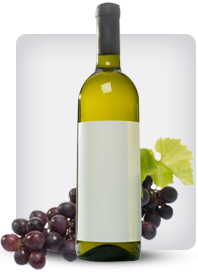

Tag: Taste
The pursuit of a great bottle of California Cabernet Sauvignon is a journey through sun-drenched vineyards and meticulous winemaking. While personal taste is paramount, understanding the impact of vintage—the weather conditions of a particular growing season—is key to unlocking the region’s finest expressions. Certain years stand out as benchmarks of quality, offering exceptional balance, complexity, and aging potential. Here is a guide to the best recent vintages for California Cabernet Sauvignon. The Hallmarks of a Great Vintage
Posted onBefore listing specific years, it’s important to know what makes them great. Ideal conditions for Cabernet Sauvignon in California include:
- A warm, consistent growing season to achieve optimal ripeness.
- A lack of extreme heat spikes, which can stress vines and produce overly alcoholic or “jammy” wines.
- A long, gradual fall with cool nights, which helps grapes retain acidity and develop complex flavors.
- Minimal rain during the harvest period to prevent dilution and rot.
Standout Vintages to Seek Out
2018
Widely hailed as a modern classic, the 2018 vintage is one of near-perfection. A long, moderate growing season with no major heat events allowed for a long hang time. The resulting wines are profoundly balanced, with deep, concentrated fruit, refined tannins, and vibrant acidity. They are powerful yet elegant, with immense aging potential. This is a benchmark year to buy with confidence.
2016
Following several drought years, 2016 provided a welcome reprieve with timely winter rains. The season was steady and warm, leading to wines of exceptional structure and purity. Cabernets from 2016 are known for their classic profile: ripe blackcurrant and cassis flavors, firm but polished tannins, and a long, expressive finish. They are approachable now but will continue to evolve beautifully for years.
2013
A legendary vintage that set a high bar for the decade. The 2013 growing season was ideal, with perfect weather from spring through harvest. The wines are intensely concentrated, rich, and powerful, yet they maintain a remarkable sense of balance and finesse. Tannins are abundant but silky. These are cellar-worthy wines that represent the pinnacle of Napa Valley Cabernet.
2019
Similar in quality to 2018, 2019 produced another stellar lineup. The vintage yielded wines that are perhaps slightly more approachable in their youth than the 2018s, with a plush, generous fruit character and supple tannins. They offer incredible drinkability now but possess the depth and structure to suggest a long and prosperous life ahead.
A Note on “Challenging” Vintages
It is worth noting that a vintage deemed “challenging” (such as 2011 or 2017, which were marked by rain and wildfires, respectively) does not mean all wines from that year are poor. In such years, the skill of the winemaker and the location of the vineyard become critically important. Many top producers still crafted outstanding wines by being highly selective with their fruit.
Ultimately, the “best” year is the one that aligns with your palate and purpose. The vintages listed here—2013, 2016, 2018, and 2019—represent a golden era for California Cabernet Sauvignon and offer a superb starting point for any enthusiast or collector.
How to Taste Wine Like a Sommelier
Posted onWine tasting is an art that combines sensory perception, knowledge, and practice. While sommeliers spend years honing their craft, you can learn the basics of professional wine tasting with a few key techniques. Follow this guide to elevate your wine appreciation skills and taste like a true connoisseur.
1. Observe the Wine’s Appearance
Before tasting, examine the wine’s color, clarity, and viscosity. Tilt your glass against a white background to assess the hue:
- Color Depth: A deeper color may indicate a fuller-bodied wine (e.g., Cabernet Sauvignon), while a lighter shade suggests delicacy (e.g., Pinot Noir).
- Clarity: Cloudiness could signal a fault, whereas brilliance is a sign of quality.
- Legs/Tears: Swirl the wine and observe the streaks on the glass—thicker legs may indicate higher alcohol or sugar content.
2. Smell the Aromas
A wine’s aroma (or “nose”) reveals much about its character. Follow these steps:
- First Sniff: Take a quick whiff to detect primary aromas (fruit, floral, or herbal notes).
- Second Sniff: Swirl the glass to aerate the wine and uncover secondary aromas (yeast, oak, or spice).
- Third Sniff: Look for tertiary aromas (aged characteristics like leather or tobacco in older wines).
3. Taste with Intention
Take a small sip and let the wine coat your palate. Focus on:
- Sweetness: Detect residual sugar (dry vs. sweet).
- Acidity: Crispness that makes your mouth water.
- Tannins: Bitterness or astringency (common in red wines).
- Body: Light, medium, or full mouthfeel.
- Finish: How long the flavors linger after swallowing.
4. Evaluate and Describe
Sommeliers use structured tasting notes. Try describing the wine in terms of:
- Fruit Profile: Berries, citrus, tropical, or stone fruit.
- Non-Fruit Notes: Vanilla, pepper, earth, or minerals.
- Balance: Harmony between sweetness, acidity, tannins, and alcohol.
5. Practice and Compare
The best way to refine your palate is to taste different wines side by side. Attend tastings, take notes, and discuss with fellow enthusiasts to deepen your understanding.
By mastering these techniques, you’ll not only enjoy wine more but also impress others with your refined tasting skills—just like a sommelier.
Taste Wine Taste Of Life – Wine, Wine – Food Industry
Posted on“Grapes America Wine Moonwalker, For Pipa immediate reminders to drink. Zuiwo battlefield Jun Mo laughed, a few people back to ancient conquests? “This is thousands of years, has been passed down by the people of the Tang Dynasty poet Han-making, in this between the lines, the chic crisp language, reflected in the rhythm of beat ups emotions out of the bold, passionate.
Grapes since the Han Dynasty from the Central Plains from the Western Regions, for brewing Wine Culture to the Tang Dynasty as Sheng or in. Ancient love wine, love magic cup wassail with fraudulent claims, this cup of the wine, but also so full of sentiment horseback Hu to play the pipa to add to the fun, several distinctive against the background of the image exchange, put side hearty swig to barracks, rendering may Hua Yan impressive, vivid and moving, but maxed.
Wine Development so far, with a rich history of decorative, rather engender air of mystery and reverie, try it, and love wine. A few more men fall in love with wine, perhaps the world’s men on the more elegant. Wine cold love, perhaps even more Happy days live live on the.
Fung had to get to know a businessman who is now a wine preacher, his ancestral home to open up into the wine village, hiding and secret development, the expression in this way a man’s love for red wine.
Winery in the old city’s quiet and remote corner of decorative harmony of natural, always carefully set to creating a just right for the wine storage room, still retains the atmosphere of the West off Old House’s simple.
Two large glass walls showcase the contrast of a little street lighting, transmission of possession of liquor in the first floor rooms, breathtaking you can almost hear the wine hidden in the breath. Tall storage cabinets extend to the ceiling, wooden box decorated with rows of red wine garden. They are safe lying, breathing. Preacher in a red wine under the guidance, you can almost hear the red wine cabinet in breathing.
Circle around the candle to sit down, accompanied by the voice of jazz ambience debris, the taste wine, taste of life conversation, so tirelessly to start.
Red wine is the natural magic of creation, continuation of the grapes after the brewing time and the fragrance, and storage time changes all the time to grow. Air, sunlight, water, planting grapes location, climate, brewing techniques, storage temperature of every detail both influenced and changed the wine quality and flavor, only a maximum depth of Wine Tasting Division can be stated succinctly in the cumulative point out any subtle changes.
Have wine on every bottle marked, like red wine, like an identity card, usually above marked with grape varieties Wine Name, crop year, grade, region, wine names such as field name and country, to understand wine, you have to first understand their logos. This wine book has been read do not know how many times been Fung, name of village for some seriously good wine he made notes. Today, Mr Fung is now almost remember the name of each wine, composition, origin and so on.
“First to identify their identity, then is the sense of smell and taste of the experience.”
Fung ancestral home to the wine village, initially only with red wine village to gather popularity, my friends love to drink the wine of the exchange reserves, now is a lot of people Mu wine from the wines to go back. The “right wine is only sold to the right people.” Fung said. “If people do not understand wine to buy in the past, would not indulge in the extravagance?” Although a businessman, sometimes the economic formula, under hobbies and personal feelings are not valid.
Not deliberately, just random.
Drinking wine the way to live with nature in every detail, sometimes wine, sometimes just to drink, sometimes only be met from the private storage. Fasting after dinner, bedtime, or banquet, and sometimes just quiet down smoking a cigar on a bottle of red wine.
Related Syrah Wine Articles
Red Wine – The Taste of Romance
Posted onWhat is the first thing that people notice about red wine? The color of course! It is the rich red color. Did you know that red wine is produced from grapes that are not only red but purple and blue as well? The many different varietals of red wine give it names like “dark red, light red, almost black, maroon, deep violet, and burgundy”. That list could expand to include many more descriptors, but most of all we love the romance and taste of reds. It has become a part of our culture to see people in the movies in intimate settings drinking red wine. In part, this is due to its color, the color that represents love, but also for the rich bold flavor that reminds us of love and romance.
Popular reds are Shiraz, Merlot, Pinot Noir, and Cabernet. The list could continue for another few sentences, but the important thing to remember is that each wine will be made from a different grape or many different varietals of grapes. Knowing what grape can be grown in what region depends on the longitude line the region falls on. Many grapes that made Italy famous are also grown in places like Michigan in the United States. The longitude line will dictate the climate in which a grape can be grown. If where you live falls on or near the same line that a famous grape growing region does, you too can grown the same varietals and maybe become famous yourself.
Pairing food with wine is an important part of the whole experience. Red wine is versatile, but there are some definite rules to follow. Rule number one should always be, if you like the taste of the wine, then drink it. Apart from that there are some other guidelines that can be followed to make the experience the best one possible. For instance, reds should never be paired with mild cheeses. Mild cheeses are always great with white wines. Strong cheese on the other hand is perfect for red wine and can be paired with just about any red available. In fact many cheese spreads are mixed with Port or Merlot which is to die for. Pastas with cream sauces and seafood will never pair well with red wine. Pasta with red sauce however will taste lovely with a nice red like Zinfandel or Merlot. Unfortunately Asian food is another pairing you shouldn’t make with reds. Poultry should only be paired with Beaujolais and pork with only Pinot Noir or Beaujolais. The good news is that beef was made for pairing with reds and you should feel free to pair almost any red with beef except for Port or Beaujolais. It is the robustness and full flavor that makes red pairing with red meat so perfect. Surprisingly, chocolate is a perfect companion for Port, Cabernet or Merlot.
Find More Red Wine Articles
popular posts
-

Why Zinfandel is Uniquely American In the vast and storied world of wine, few grapes carry a narrative as distinctly American as Zinfandel
12-25 2025While its genetic roots trace back to the ancient Croatian variety Crljenak Kaštelanski and the Italian Primitivo, Zinfandel has woven itself into the very Read More
-

Organic Syrah from Paso Robles: A Testament to Terroir and Sustainable Passion Nestled in the rolling hills of California’s Central Coast, Paso Robles has emerged as one of the world’s most exciting wine regions
12-24 2025While it boasts a diverse portfolio of varietals, one grape has found a particularly profound expression here: Syrah. When cultivated through certified organic practices, Read More

